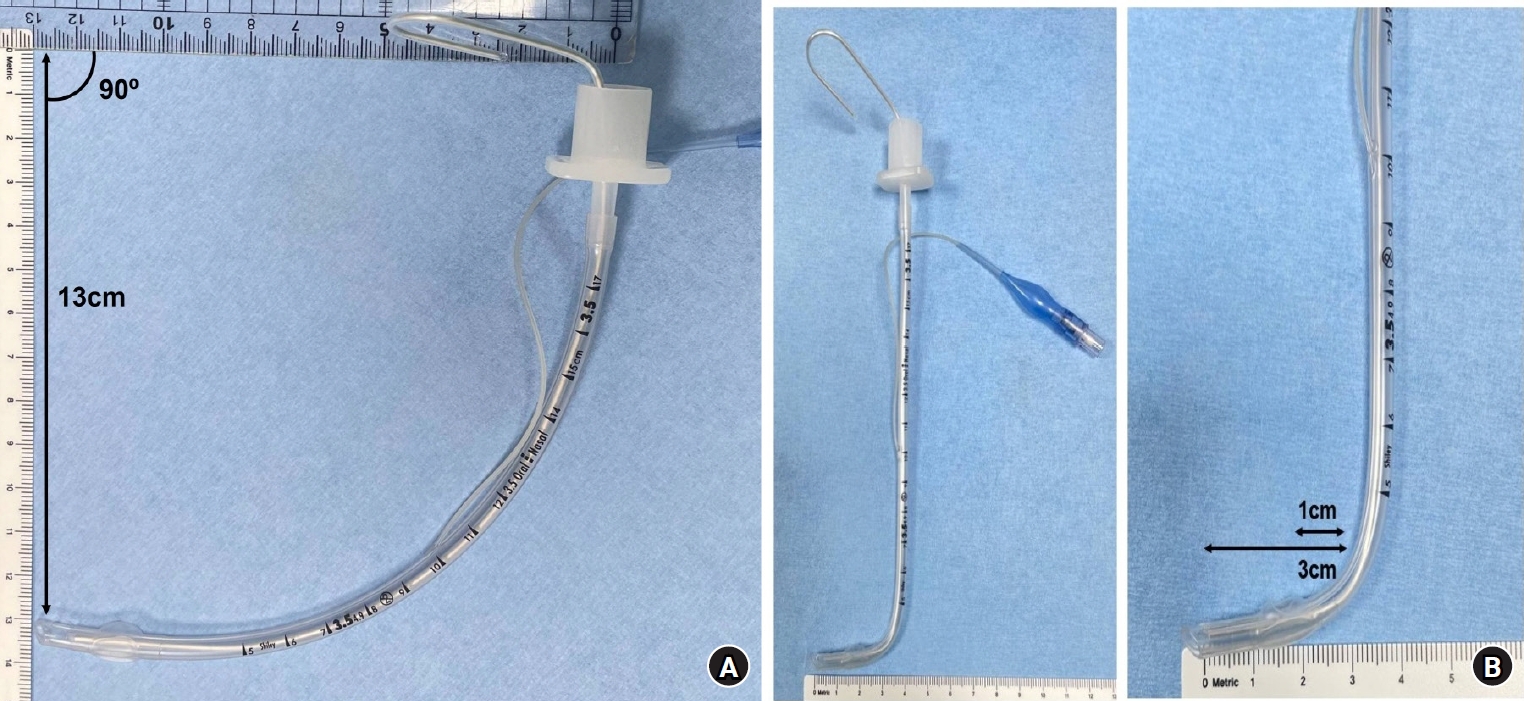Response to "Comment on Usefulness of C-curved stylet for intubation with the C-MAC® Miller videolaryngoscope in neonates and infants: a prospective randomized controlled trial"
Article information
Thank you for the insightful comments made by Park et al. [1] on our previous article. As mentioned in the “Limitations” section [2], the success of intubation using a videolaryngoscope depends on the type of endotracheal tube (ETT) and videolaryngoscope, skill of the medical practitioner, and stylet angle. In our study, all intubations were performed using a cuffed ETT (ShileyTM, Hi-Contour Oral/Nasal Tracheal Tube, Covidien) ID 3.0 mm and C-MAC® Miller videolaryngoscope (Karl Storz) for neonate and infant populations. Therefore, to generalize our results to a larger population, further investigations are needed.
To maintain ETT angle consistency throughout the study, we created ETT templates for both the hockey-stick- and C-curved ETTs [2]. However, we now recognize that our explanation was insufficient. The C-curved stylet is shaped like a circular quarter with a radius of approximately 13 cm. The angle between the ETT tip and end (connector part) was approximately 90º (Fig. 1A). The hockey-stick-curved stylet was bent 3 cm upstream from the tube tip (approximately 2 cm upstream of the distal end of the cuff; Fig. 1B).
We agree that the ease of insertion depends on the angle of the laryngoscope blade and the length of the tube tip that meets the front of the glottis. During our study, we attempted to ensure sufficient space inside the mouth by applying firm, steady forward and upward pressure with the videolaryngoscope, even if the glottis could be visualized without this maneuver. A secure space within the oral cavity facilitates ETT manipulation, particularly with neonates and infants. However, controlling how the performers held and inserted the ETTs during the study was difficult. Instead, we determined which stylet curvature allowed for better positioning of the ETT tip at the glottis.
We hope that this response has provided sufficient clarification of our study. We would like to thank you again for your thoughtful feedback.
Notes
Funding: None.
Conflicts of Interest: Ji-Hyun Lee has been an editor of the Korean Journal of Anesthesiology since 2021. However, she was not involved in the review process for this article, including peer reviewer selection, evaluation, and decision-making. No other potential conflict of interest relevant to this article was reported.
Author Contributions: Jung-Bin Park (Conceptualization; Investigation; Methodology; Writing – original draft); Ji-Hyun Lee (Conceptualization; Investigation; Methodology; Writing – review & editing)

